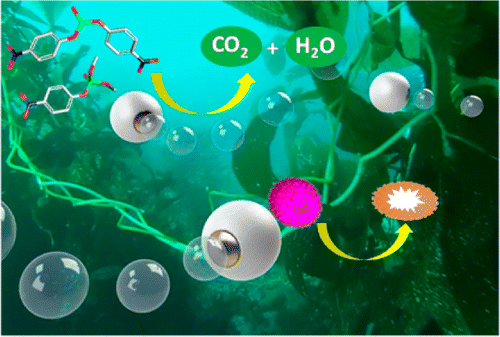Microrockets fueled by water neutralize chemical and biological warfare agents

With fears growing over chemical and biological weapons falling into the wrong hands, scientists are developing microrockets to fight back against these dangerous agents, should the need arise. In the journal ACS Nano, they describe new spherical micromotors that rapidly neutralize chemical and biological agents and use water as fuel.
Joseph Wang and colleagues point out that titanium dioxide is one of the most promising materials available for degrading chemical and biological warfare agents. It doesn't require harsh chemicals or result in toxic by-products. Current approaches using titanium dioxide, however, require that it be mixed in whatever solution that needs to be decontaminated. But there's no way to actively mix titanium dioxide in waterways if chemical and biological agents are released into the environment. So scientists have been working on ways to propel titanium dioxide around to accelerate the decontamination process without the need for active stirring. But approaches so far have required fuel and other compounds that hinder neutralization. Wang's team wanted to fix this problem.
To give titanium dioxide a source of thrust, the researchers coated it over a magnesium sphere core. When put in a watery environment, a single hole in the shell allows water to enter and react with the magnesium core. This produces hydrogen gas, which bubbles out and propels the titanium dioxide through the surrounding liquid. This enables it to more efficiently and rapidly contact and degrade harmful agents. When tested, the micromotors successfully neutralized nerve agents and anthrax-like bacteria in considerably less time compared to titanium dioxide microparticles that aren't propelled.
More information: "Water-Driven Micromotors for Rapid Photocatalytic Degradation of Biological and Chemical Warfare Agents" ACS Nano, Article ASAP. DOI: 10.1021/nn505029k
Abstract
Threats of chemical and biological warfare agents (CBWA) represent a serious global concern and require rapid and efficient neutralization methods. We present a highly effective micromotor strategy for photocatalytic degradation of CBWA based on light-activated TiO2/Au/Mg microspheres that propel autonomously in natural water and obviate the need for external fuel, decontaminating reagent, or mechanical agitation. The activated TiO2/Au/Mg micromotors generate highly reactive oxygen species responsible for the efficient destruction of the cell membranes of the anthrax simulant Bacillus globigii spore, as well as rapid and complete in situ mineralization of the highly persistent organophosphate nerve agents into nonharmful products. The water-driven propulsion of the TiO2/Au/Mg micromotors facilitates efficient fluid transport and dispersion of the photogenerated reactive oxidative species and their interaction with the CBWA. Coupling of the photocatalytic surface of the micromotors and their autonomous water-driven propulsion thus leads to a reagent-free operation which holds a considerable promise for diverse "green" defense and environmental applications.
Journal information: ACS Nano
Provided by American Chemical Society





















